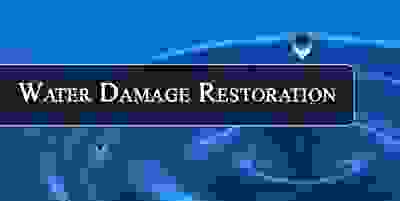HIRE RESTORER OR BUILDER
WHAT TO DO
To begin, we need to clarify the variety of terms used to describe those companies that provide the requisite services. In the restoration industry standards they are all referred to as “restorers”. However, as it relates to water damage restoration, the insurance industry and others have different terms such as “emergency response” or “mitigation” companies. These two terms refer to the same kind of company. They are water damage restoration companies that will provide the initial water extraction and drying services to prevent any further damage. After they have completed their services, the property needs to be reconstructed by a “restoration contractor”. The restoration contractor might hire subcontracted services for flooring, cabinets, electrical or other licensed trades. In some case the insurance company will take on the responsibility to have one or more of these licensed trades provide services independent of the restoration contractor.
For the purpose of these articles, let’s refer to the “emergency response” or “mitigation” companies as “restorers” and the reconstruction trades as “contractors”.
Be cautious when hiring a restorers or contractor – make sure you are hiring someone reputable. It is your obligation to hire these companies and not the insurance company. It is your property and no one else can hire them for you. Who you hire is solely up to you. Here are some things to consider when looking for a qualified companies:
Hire a local company. Deal only with established firms or individuals who can provide references and are willing to give you a signed contract.
To find local restorers and contractors, check with the International Cleaning and Restoration Association (ICRA) website at www.icrassociation.org/index.php?option=com_sobipro&task=search&sid=54&Itemid=197. You can also search for Cleaning and Restoration Association (CRA) Select Members by using the CRA search page. Select Members are CRA members that have voluntarily agreed to have their companies’ scrutinized by participating in a lengthy application process. They also agree to the CRA’s Dispute Resolution Policy that helps to protect you their client. Learn more about the CRA Select Member Program by going to:www.crassociation.org/index.php/component/osemsc/article?id=37
To help you mitigate your damages, restorers can provide emergency services. You might be asked to sign a waiver of your right to rescind the agreement within 72 hours. The law allows for this waiver so that the emergency services can be performed. Otherwise, you or your insurance company would be responsible for additional costs for damages due to a delay. Hiring a qualified restorer for the emergency services is something that you should do as soon as possible. You do not have to wait for the adjuster to arrive or give you permission.
However, you should not sign contracts for major repairs (i.e., reconstruction contractors) until your insurance company representative (e.g., the adjuster) has determined how much damage there is and how much the company will pay.
Require the restorers and contractors to agree to abide by the industry standards. There are two relevant industry standards that restorers should follow. The first is the ANSI/IICRC Standard and Reference Guide for Professional Water DamageRestoration (S500); the second is the ANSI/IICRC Standard and Reference Guide for Professional Mold Remediation (S520). Other standards might also apply depending upon the damage.
Payment arrangements with your contractor should be handled carefully. Here are some things to consider regarding payment:
If the repair work is extensive, the reconstruction contractor may ask for periodic partial payments as the work progresses, but a reputable contractor would not request full payment in advance. Each State regulates what a licensed contractor can require as payment upfront. For instance, in California the state limits any advance payment at the time of contract signing to 10% of the total estimated job cost or $1,000, whichever amount is lower. All payments thereafter are supposed to be made for work performed or for materials delivered to the job site.
Be sure to include a clause in your contract that stipulates that when final payment is made, you will receive signed waivers or “lien releases” for all materials and labor.
If you have a mortgage on your home, the lending institution may also have specific requirements about how the insurance funds are expended. The insurance company might include the mortgage company as a payee on any checks issued to you for structural repairs.
If there is a discrepancy over the cost of repairs or the contractor has found hidden damage, you should first contact the insurance company representative to help resolve the differences. If you are still unable to resolve your differences, contact the Department of Insurance.

Copyright © 2018 HOME AGAIN EMERGENCY SERVICES - All Rights Reserved.